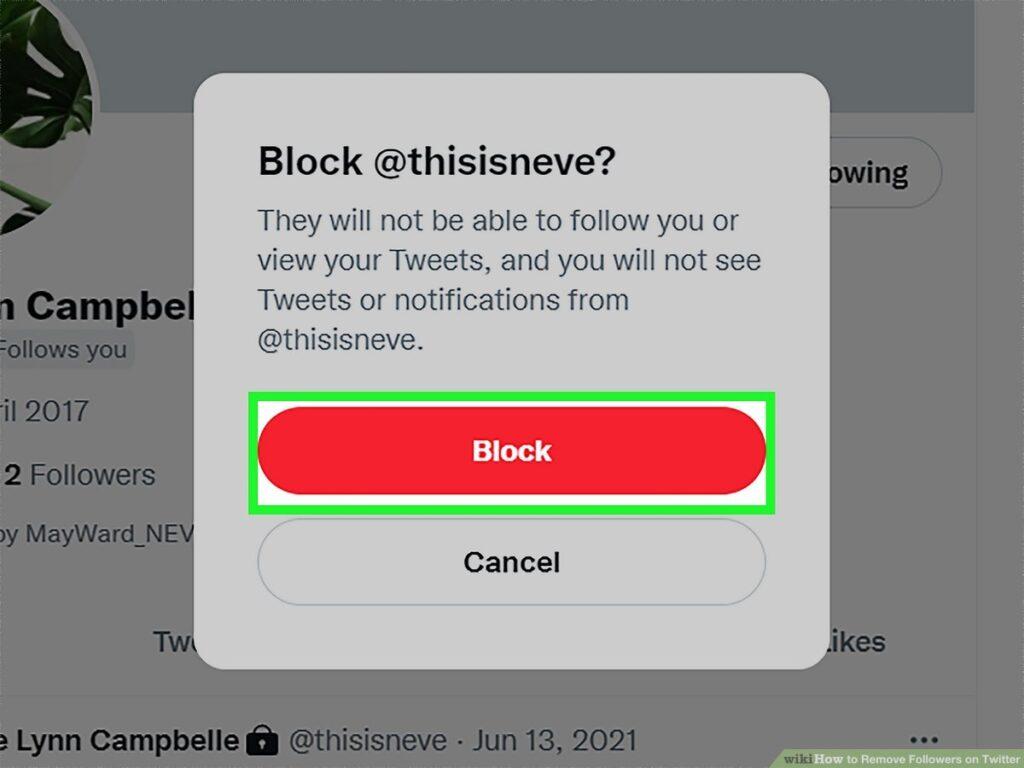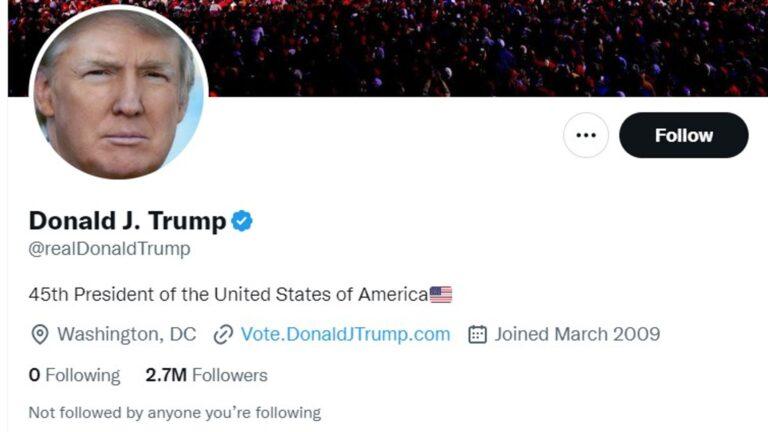You are scrolling through your Twitter feed when you notice something strange. Your follower count has suddenly shot up, but when you click on your new followers’ profiles, they seem a bit…bot-like. What’s going on here? Why are you accumulating so many robotic followers on Twitter?
Table of Contents
What Exactly Are Twitter Bots?
Before we dive into the reasons behind bot followers, let’s define what bots on Twitter actually are.
Twitter bots are accounts controlled by software, not real people. They often have default icons, few to no tweets, and may have usernames containing lots of numbers. Bots are programmed to perform various automated tasks like:
- Tweeting scheduled content or retweeting specific accounts
- Following or unfollowing other accounts
- Liking and retweeting posts containing specific keywords
- Replying to tweets with pre-written responses
- Scraping data from Twitter
In short, they exhibit repetitive bot-like behaviour instead of behaving like real human Twitter users.
Common Reasons Bots Might Follow You:
1. To Boost Their Follower Counts
One of the main reasons bots follow accounts is to appear more credible and influential on Twitter. More followers = more credibility in many users’ minds.
By auto-following tons of accounts, bots can quickly rack up big follower counts. They hope some real accounts will follow back, allowing them to continue appearing popular and trustworthy. Sneaky!
2. To Promote Scams, Spam or Malware
Unfortunately, not all Twitter bots are harmless. Some bots made by scammers or spammers will follow users in hopes of promoting shady links, content, or malware.
Their goal is to get unsuspecting users to click dangerous links or fall for online scams by interacting with their bots. Stay vigilant, and don’t click on sketchy links from bot accounts!
3. To Scrape Data and Spy on Users
Data mining bots will follow tons of accounts and collect intelligence by scraping data from their tweets, profiles, followers, etc. This data can then be analyzed or sold by whoever controls the bot.
So, if you notice a data-scraping bot suddenly following you, be aware it may be surveilling your Twitter activity and gathering intel. Yikes!
Also read: How to Scrape Twitter Followers: The Ultimate 2023 Guide
4. To Sell Followers or Engagement
Shady websites sell fake Twitter followers and engagement provided by bot accounts. Following real accounts in bulk can sell these bots to users who artificially inflate their follower counts and engagement.
If you notice scores of bot accounts following you all at once, they were purchased in bulk and directed to follow random accounts (like yours) to appear more realistic before being sold.
5. You Used Certain Hashtags, Keywords or Bot Traps
Bots may target accounts that tweet specific hashtags or keywords their programmers want them to search for and engage with.
For example, bots looking to spam users with cryptocurrency scams might follow accounts using popular crypto hashtags.
Bots also look for “bot traps” – tweets deliberately using terms or phrases known to attract bots, like invites to click suspicious links. Avoiding shady hashtags and bot traps can help reduce unwanted bot attention.
6. You Have a Popular, Influential Account
Bots are often directed to follow influential accounts with many followers to get followers back, scrape data from, or target spam/scams.
So, if your account has many genuine followers, it’s like bot bait – they’ll come flocking to you, trying to capitalize on your popularity. The price of Twitter fame!
7. Random Chance or Accident
Sometimes, bots just follow you randomly without specific targeting or intent. With bots auto-following millions of accounts, your handle can occasionally get swept up accidentally.
Think of it like getting junk mail addressed to “occupant” – they’re not seeking you specifically; you just happened to end up on the mailing list.
8. You Followed or Interacted With Other Bot Accounts
Bots may programmatically follow back or target any account that follows or engages with them. So, interacting with even one suspected bot account can lead to a bot follow spree.
Be cautious about following back or replying to accounts that seem bot-like. It signals their bot network that your account is “safe” to follow or interact with.
How to Tell if You Have Bot Followers on Twitter

Are any of your new followers suspicious of Twitter bots? Here are some signs to look for:
- Default profile picture: They use the default egg or icon instead of a real photo.
- Generic, numbered username: Their handle contains a random string of numbers or letters.
- No tweets: They have never tweeted despite following hundreds or thousands of accounts.
- Minimal profile info: No bio, location, URL, etc filled out.
- Follows hundreds per day: Their follow number increases by hundreds daily.
- Spam or bot-like tweets: They tweet suspicious links, spam, or bot-like gibberish.
- Recently-created account: Their account was made very recently, like this month or week.
If you see multiple signs a follower is fake, they’re likely just a sneaky Twitter bot up to no good! [insert sarcastic robot sounds here]
Just How Common Are Bot Followers on Twitter?
Unfortunately, bot accounts are prevalent on Twitter, with various reports estimating between 5-15% of Twitter users are bots. Some specific statistics:
- Twitter estimated that under 5% of users were bots in 2013, but many believe that percentage has grown significantly.
- A 2021 academic study found over 15% of English-speaking Twitter accounts exhibit bot-like behaviour patterns.
- In 2017, researchers identified some 3.5 million suspicious bot accounts tweeting election-related content in the U.S.
- Accounts with over 10k followers can have between 20-30% fake bot followers, according to TwitterAudit.
So, while it’s hard to know the exact number, evidence suggests bot accounts are very common on the platform. Don’t be surprised if some sneak into your followers now and then!
Should You Be Concerned About Bot Followers?
Bot followers are mostly a nuisance, but some specific concerns include:
- They inflate your follower count: Bots make it look like you have more (or more fake) followers than you do.
- They can spam your followers: Bots may @ mention or spam your followers if allowed to.
- They scrape your data: Data mining bots profile and collect info on your account.
- They slow down notifications: You’ll get more annoying notifications as they interact.
- They lure you into scams: Malicious bots try to get you to view dangerous links.
- You appear bot-supported: Too many bots following you look suspicious to real users.
So, while low numbers of bot followers are harmless, too many malicious bots can negatively impact your account. Keeping your follower list tidy limits these risks.
How Can I Remove or Block Bot Followers on Twitter?

If you want to purge suspected bot followers, here are some options:
Manual Removal
- Check new followers for bot signs like no tweets, default pics, spammy content, etc.
- Click their profiles and manually hit “Remove this follower”.
- Slow but lets you screen followers account by account.
Twitter Sweep Tools
- Use free services like [names of tools] that identify low-quality and suspicious accounts.
- Review their suggestions and sweep unwanted bot followers in bulk.
- Fast but less controlled than manual removal.
Restrict Your Account
- In settings, check the box to automatically approve all new followers.
- This only allows bots to follow you if you manually approve them first.
- Prevents bad bots but also limits new engagement from real users.
Make Your Tweets Private
- Also, in settings, you can make your Twitter account private.
- This requires the manual approval of all new followers.
- Stops bots but limits your reach and engagement.
Block Suspicious Users
- Instead of removing bot followers you find, consider blocking them.
- This prevents them from viewing your tweets or ever following you again.
- Blocking bots helps Twitter identify and suspend them.
So, while bot followers are tricky to avoid entirely, taking action to limit and remove them helps maintain a healthy human follower base. A bot-free Twitter is a happy Twitter!
Frequently Asked Questions About Twitter Bots
Still have questions about bots on Twitter and why they follow people? Here are some common FAQs:
-
Why do I lose followers after gaining bots?
If you suddenly gain many suspicious followers, Twitter may detect the bot activity and purge them from your account a few days later, resulting in a follower drop. Don’t worry; this is Twitter removing fake accounts, not real people unfollowing you.
-
Are bots illegal on Twitter?
Bot accounts themselves are not illegal, and Twitter’s API allows some automated usage. But malicious bots spreading spam, scams, and false info violate Twitter’s policies. The platform works to detect and suspend these bad bot accounts.
-
Can bots damage your Twitter account?
Bot followers are usually just a nuisance and won’t do lasting harm. However, having too many bots or letting them spam your followers could get your account flagged or restricted by Twitter.
-
Should I buy followers from bot services?
Buying fake bot followers or engagement is strictly against Twitter rules and can lead to account suspension. Avoid any website offering to sell you followers – it’s fake engagement from bots!
-
How can I report bot accounts?
If you encounter a suspicious bot account on Twitter, you can report it directly by tapping Report on its profile or in any of its concerning tweets. This helps Twitter identify bot behaviour.
The Bottom Line
Bots are an inevitable part of using Twitter, so don’t be alarmed if a few occasionally sneaks into your followers. Just stay vigilant, limit any spam or data collection, and sweep your followers list occasionally to delete low-quality bot accounts. Focus on building genuine engagement with real humans, and you’ll be fine!
Now you know why bots might follow you, how to spot them, and what to do about bot followers. Here’s hoping for a 100% human follower base in your future!





